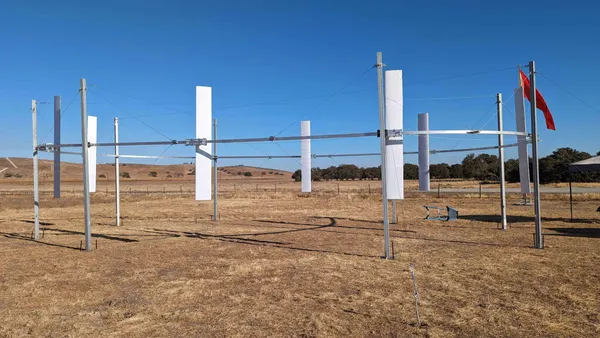Editor's Note: The following is a Viewpoint article contributed by Ben Norris. Norris is the head of Clean Power Research's consulting group, which developed the value of solar tariff for Austin Energy in 2011 and the methodology for setting a value of solar in Minnesota in 2014.
I recently asked my taxi driver whether Uber took much business away from him. He jerked his head up and stared at me through the rear view mirror. His eyes widened. I had mistakenly hit a nerve. For 20 minutes I was subjected to the driver’s wild, uncontrollable rant as we bolted down the highway, weaving and bobbing between the lanes. He spat out a litany of grievances about regulations, insurance and jobs. He had a message to deliver. I was his captive audience.
A few weeks later I received an impassioned call from someone on the front line of the solar debate. This person had some words to share about the “value of solar.” Another twenty minutes of rant. While I was accustomed to treading carefully between both sides of the debate, the fervor was high, and I was transported back to the taxicab. I could almost see the wildness of his eyes in the rear-view mirror.
What is it about the value of solar (VOS) that arouses such emotion?
The answer is that in many VOS studies there is much at stake, so studies are often critiqued on the basis of the numeric results. Not on the data. Not on the method of calculation. The (irrational) view is that if the result is too high, especially if higher than the retail rate, it must be wrong! Or, if it is too low, it will destroy the solar business! Therefore, we should stop doing VOS studies.
A more rational approach would be to take a critical look at what drives the results of a given study, to look under the hood and evaluate whether the input assumptions and methods are reasonable or not.
Comparing VOS studies in Arizona
To illustrate: In 2013, we performed an analysis for the Interstate Renewable Energy Council (IREC) to compare the results of two recent VOS studies for the Arizona Public Service (APS) service territory. The first study was originally performed by SAIC (now Leidos) for APS. The second was performed by solar industry consultant Crossborder Energy. The two studies ended up with dramatically different results and left stakeholders wondering how to interpret the discrepancy.
There are three primary factors that drive differences in VOS study results: the analysis framework, the cost/benefit categories and the input assumptions. In comparing the two Arizona studies, all three factors came into play.
As for the framework, SAIC calculated selected annual values through 2025, while Crossborder calculated 20-year levelized results through 2034. Much of the confusion was simply due to the two frameworks not being directly comparable. It’s like trying to compare interest rates between a 30-year fixed rate mortgage and a 15-year adjustable rate mortgage. Analytically, the rates are not directly comparable.
The first step in our comparison of the two studies was to confirm that DGValuator, Clean Power Research’s solar valuation calculator, produced the same output results when using the same input assumptions. The chart below shows that when using SAIC’s input assumptions, DGValuator matched SAIC’s results (converted to a 12-year levelized format). When using Crossborder’s assumptions, DGValuator matched the Crossborder results (20-year levelized format). This step demonstrated that the DGValuator calculation engine could be used to compare both studies objectively.
So, why the difference in values? To answer this, we put the two studies into a common framework: a 20-year levelized value, each calculated straight from DGValuator. The results are shown in the chart below. SAIC assumptions led to a value of $0.07 per kWh, while the Crossborder assumptions led to a value of $0.23 per kWh.
As shown by the colored bars, an important explanation for the different values is that Crossborder included five more benefit categories than SAIC (avoided renewables such as those required to meet renewable portfolio standards, environmental benefits, distribution, transmission, and ancillary services and reserves). These additional benefit categories accounted for $0.09 per kWh of the difference.
There were also two categories common to both studies: generation capacity and energy. Since we used the same engine and methods to calculate both sets, the difference in these two benefit results are directly attributable to differences in input assumptions, such as the cost or timing of new capacity, the heat rate of the displaced generation unit, or line loss factors.
This comparison suggests two fairly obvious conclusions: (1) understanding the study framework is essential to understanding study results; and (2) the choice of input assumptions and cost/benefit categories drive the numeric results.
Why, it is indeed possible to view VOS studies rationally!
A look at Maine’s VOS study
As a further illustration, Clean Power Research performed a 2015 VOS study for the Maine Public Utilities Commission (PUC). This study resulted in a first year value of in-market benefits of $0.09 per kWh. On the other hand, when using a 25-year levelized value and including several out-of-market societal benefits, the result was $0.33 per kWh. This is a huge difference in results. But, armed with our insight from the APS analysis and a rational understanding of VOS, we see that the difference is completely explainable by differences in framework and selection of benefit categories.
In this case, the input assumptions and methods were determined by the PUC after considering comments from stakeholders. For example, the avoided energy costs were based on hourly New England ISO market clearing prices, and the avoided transmission costs were based on the ISO pricing schedule for regional network service.
The selection of categories was also decided through the public PUC stakeholder process. In this case, the study results were intended to set policy rather than govern a ratemaking process, so many of the categories were not traditional avoided costs (societal benefits were marked as such for clarity). For example, the benefit of solar to avoid fuel price uncertainty was included in the list, despite the fact that long-term hedging is not practiced in electricity markets.
Looking ahead
As the industry grapples with many issues related to valuation of distributed solar on the grid, it will be helpful to keep sight of the most important underlying issues. The question is not whether VOS is a valid way to evaluate costs and benefits. Rather, we should be asking ourselves: What should the preferred framework of VOS studies be? What cost and benefit categories should be included? Are the underlying data publicly available and the calculation methods transparent enough to be repeatable by other parties? These are the questions at the heart of the matter.
Looking back, I realize that in the passion of the moment, my taxi driver veered from the task at hand and never answered my original question. In the discourse about VOS, it’s important to not let passion stand in the way of rational analysis to secure a strong future for solar in the U.S.












